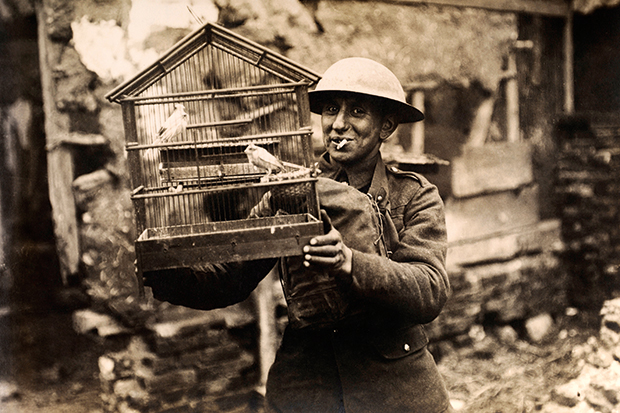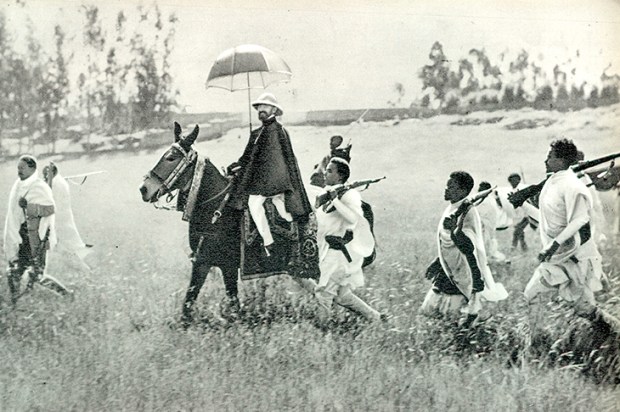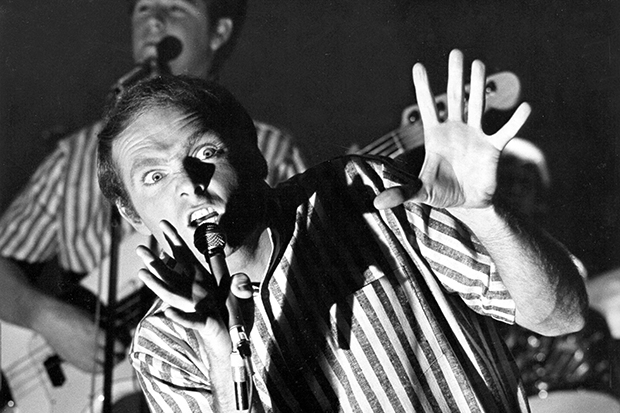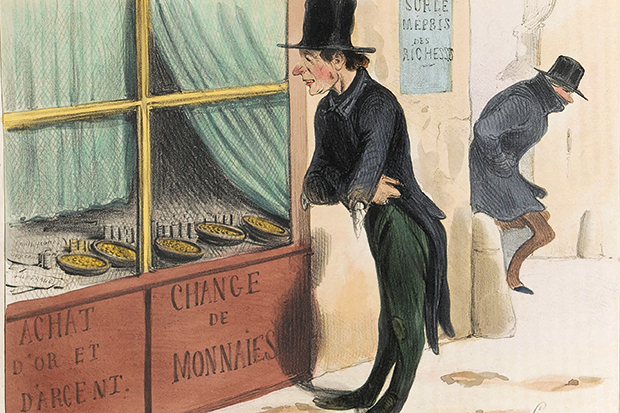In July 1915 the poet Edward Thomas enlisted as a soldier with the Artists’ Rifles, even though, at the age of 37, he had no obligation to do so. When his friend Eleanor Farjeon asked why, he scooped up a handful of earth and replied: ‘Literally, for this.’ John Lewis-Stempel’s new book is persuasive that Thomas and his contemporaries’ love of the natural world informed both their motivation to fight and their conduct during the first world war.
Theirs was the prelapsarian Britain of Thomas’s poem ‘Adlestrop’, which records a brief, unscheduled halt aboard a steam train on a hot June afternoon in 1914: peaceful, inviolate, chiming with birdsong, loved and understood by a generation of young men who knew willowherb from meadowsweet. Thomas ‘died at Arras for Adlestrop’, Lewis-Stempel contends, as did countless others who likewise fought ‘for King and Countryside’, in defence of the pastoral realm that the poem evokes. Lewis-Stempel illustrates his case with verse throughout, not from those such as Wilfred Owen who were ‘canonised for their “correct” politics, meaning anti-war’, but from a bevy of the war’s minor poets, whose work he knows well.
British soldiers brought to the battlefronts of rural France and Belgium a pre-existing love of nature, he argues. Whether they hailed from the countryside or the city, these were men for whom proximity with animal life felt normal. Rural Edwardian children kept bees, collected birds’ eggs and pinned butterflies. London’s roads were congested with horse-drawn carriages and its trees and bushes thronged with birds; the capital’s sparrow population has, we are told, since declined by 99 per cent. The Great War occupies a historic cusp, Lewis-Stempel says: it opened an age of industrial slaughter, but remained a time when people engaged with nature in a way we no longer do today.
Where Poppies Blow details how this relationship intensified within the theatres of war via chapters on the local birdlife, the warhorses, the troops’ interest in botany, their extracurricular country sports, their pets and the trenches’ lice and vermin. Lively images abound: carrier pigeons relaying battlefield messages; a soldier by a pond trying to shoot pike with his revolver; another creeping through woodland to spy a golden oriole while bullets riddled the tree trunks. Others preferred to spend their spare time shooting birds, though this diversion couldn’t satisfy the most ardent marksmen; Major Neil Fraser-Tytler noted with gratitude that, unlike the partridge, the Hun was ‘always in season’.
Canaries were treasured, not only as gas detectors but also in ambulance trains, where their song comforted wounded soldiers. Cavalry drew inspiration from their horses’ fortitude, while certain wild animals’ ability to carry on oblivious amid the madness offered precious glimpses of sanity. As the Somme degenerated, a Captain Sidney Rogerson took heart from watching an unperturbed mole digging through the mud. Skylarks’ song rang out between bouts of shelling. Birds were not only a reminder of the world’s beauty, but again a source of guidance to the Tommy. Swans nested in the moat below Ypres’s ruined ramparts; a blackbird laid eggs in a regularly used British siege gun. ‘If the birds stayed put, so could he,’ Lewis-Stempel writes.
The battlefield cultivated its own ecology. Wading birds were attracted to the quagmire that had once been farmland. The flies that swarmed over the men’s and horses’ remains attracted insectivorous birds — swallows, swifts, martins. Magpies and crows picked at abandoned corpses, as did a swarming legion of rats, which in turn attracted kestrels (a soldier counted 31
hovering over a field in the Somme).
Lewis-Stempel is a prolific author with 12 titles now to his name, two of them published earlier this year. Most either concern the Great War or the natural world, and here, as he mentions in his introduction, ‘the two rivers meet’. The depth of research betrays his knowledge of both fields. It is a shame, then, that in places this book smacks of being written in haste. There are repetitive excerpts from soldiers’ diaries and memoirs, while various passages feel disjointed and terse, lacking a final draft’s polish. The prose is more often sharp and stylish, its tone heightened by recondite words (horses dying from ‘concinnate’ factors, trench-dwelling men living like rabbits in ‘hypogean strangeness’); but then the effect is undone by a jarring cliché. John McCrae’s poem ‘In Flanders Fields’ is ‘iconic’, while ‘war burst out of the clear summer sky of 1914’ and ‘was always rich in irony’.
Such platitudes are at odds with the book’s memorable content, which shows that, for all the war’s drudgery and horror, its protagonists were familiar with moments as full of stillness, beauty and oblique moral instruction as an unwonted pause at a deserted railway station in the Cotswolds.
The post For king and countryside appeared first on The Spectator.
Got something to add? Join the discussion and comment below.
Get 10 issues for just $10
Subscribe to The Spectator Australia today for the next 10 magazine issues, plus full online access, for just $10.
You might disagree with half of it, but you’ll enjoy reading all of it. Try your first month for free, then just $2 a week for the remainder of your first year.














Comments
Don't miss out
Join the conversation with other Spectator Australia readers. Subscribe to leave a comment.
SUBSCRIBEAlready a subscriber? Log in